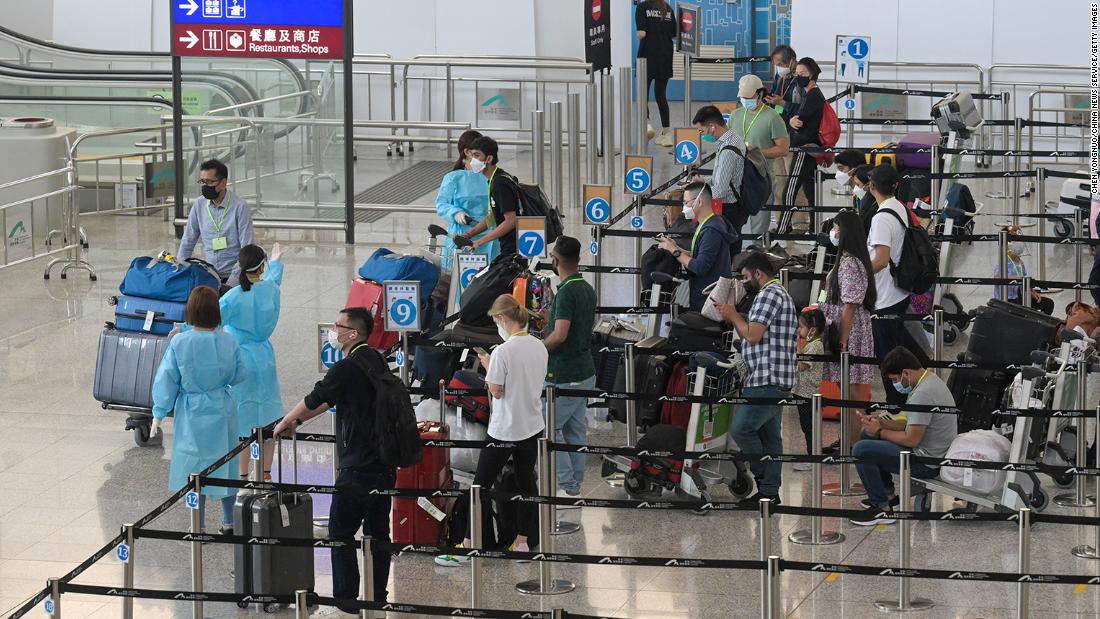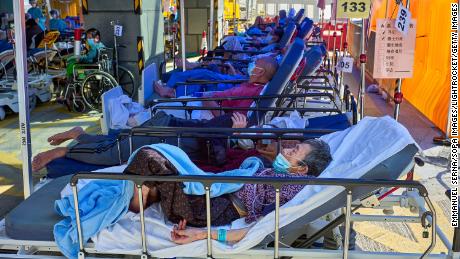Under new rules that will take effect from September 26, incoming travelers will be required to undergo three days of self-monitoring on arrival.
Hong Kong’s Chief Executive John Lee said in a much anticipated press conference on Friday that the city’s infection numbers have stabilized, allowing for the removal of quarantine.
“We hope to give the maximum room to reconnect Hong Kong, and to revitalize our economy,” Lee said.
Incoming travelers will be able to do their three days of self-monitoring at home or a place of their own choice. During this time they will be able to go outside but will be restricted from some places.
Arrivals will no longer need to provide a negative PCR test before boarding a plane. However, they will need to provide a negative rapid antigen test (RAT) 24 hours before they board.
During the three-day monitoring period, people will be assigned an amber color under the city’s digital health code, which will prevent them from entering places such as bars or restaurants.
They will need to do PCR tests on days 2, 4 and 6 after arrival, and an RAT test every day for seven days after arrival.
The policy shift came after Japan announced that it will re-open its borders from October 11 and after Taiwan said it aims to scrap its mandatory quarantine on October 13 if the island has passed the peak of its latest Omicron BA-5 outbreak.
Calls for the international border controls to be loosened under the leadership of Lee’s predecessor Carrie Lam, who left office June 30, were stymied by a competing demand to open quarantine-free travel to the mainland — a proposition that has yet gone unfulfilled.
A public signal of Beijing’s support for Hong Kong’s new policy route came on September 20, when the deputy head of the Hong Kong and Macao Affairs Office Huang Liuquan said the Hong Kong government had been coordinating its policies in line with its local situation and adjustments did not need to be “overinterpreted.”
While the new policy for international arrivals in Hong Kong may not be a harbinger of imminent change in mainland policy, it is a mark of divergent situations on each side of the border.
In mainland China, in contrast, the vast majority of the country has yet to be exposed to the virus — placing its population at a deficit when it comes to natural immunity from infection, a concern for health officials there who fear the strain of a widescale outbreak on the health care system.
Hong Kong’s new measures comes more than 900 days after the city first enacted border restrictions in March 2020 and nearly two years after it mandated hotel quarantine for all international arrivals in December 2020. At its longest, the quarantine period stretched to 21 days. Travelers who tested positive during quarantine were moved to designated facilities, including, at times, government-run camps.
The program became increasingly controversial among the public after Covid-19 vaccines became widely available, local case numbers rose and places with similar systems like New Zealand and Australia opened their borders.
This summer a dearth of available hotel rooms and limited flights raised public anger as travelers risked being trapped outside the city until a free room opened up if their itinerary was disrupted, for example by catching Covid-19 or having a flight rescheduled.
Certain restrictions have been eased in recent months. In May non-Hong Kong residents were permitted to enter the city from overseas for the first time in more than two years, while a scheme that saw some flights with Covid-positive passengers suspended was scrapped in July.
Earlier this summer, Lee’s administration reduced quarantine from one week to three days, plus an additional four days of health monitoring, during which arrivals are not allowed to go to places including bars, gyms and restaurants.
Hotel quarantine and pre-flight testing requirements had been seen as a remaining significant hurdle to travel into the city, though questions remain over what role the new plan will play in reviving the city’s once vibrant tourism industry.



